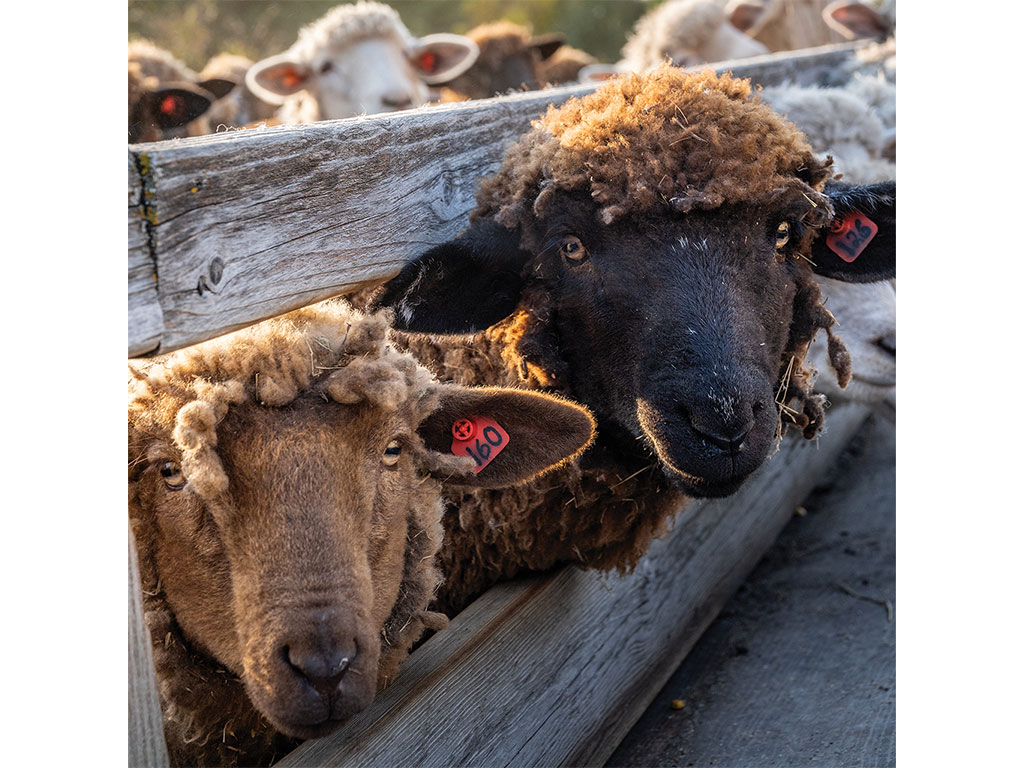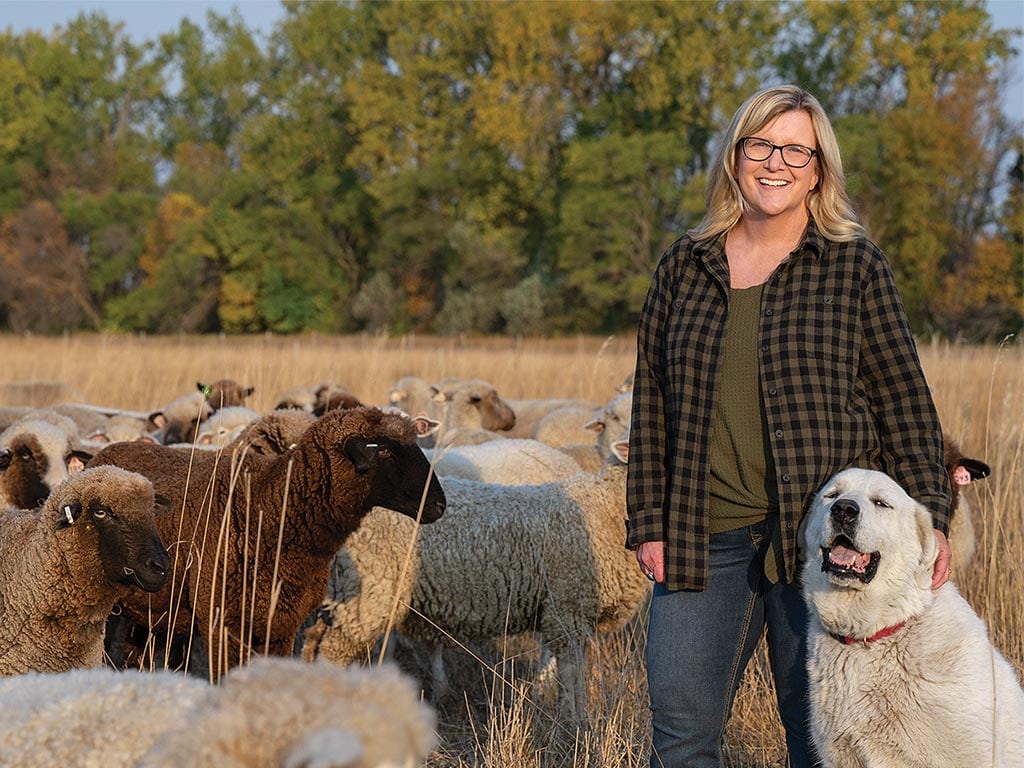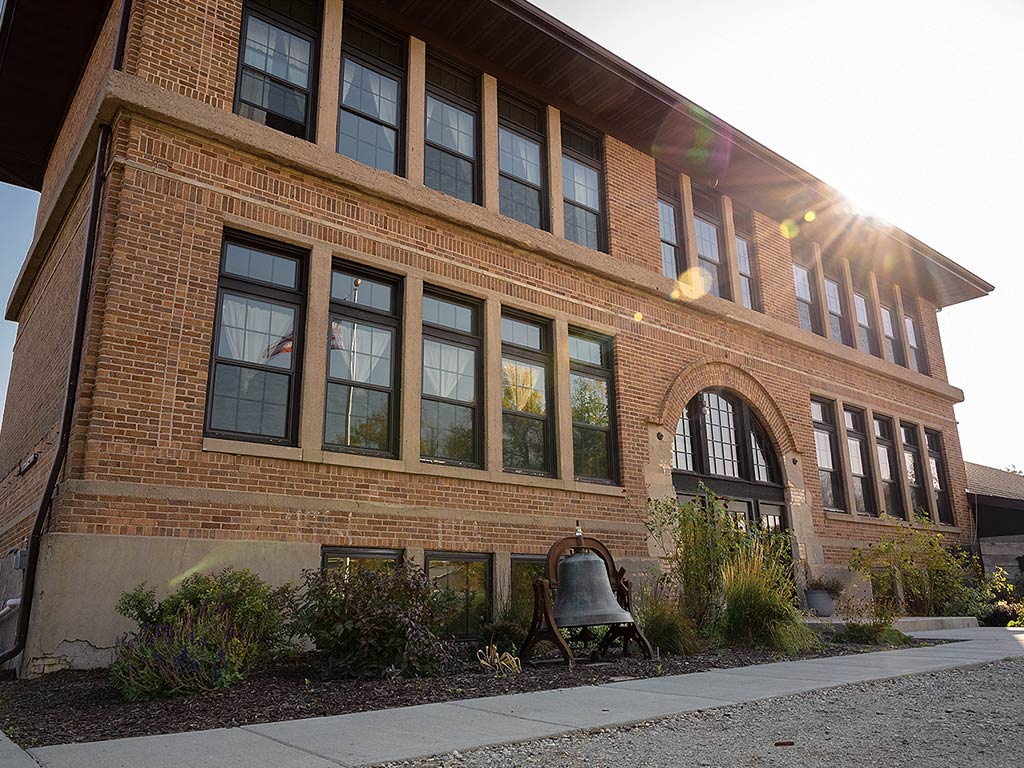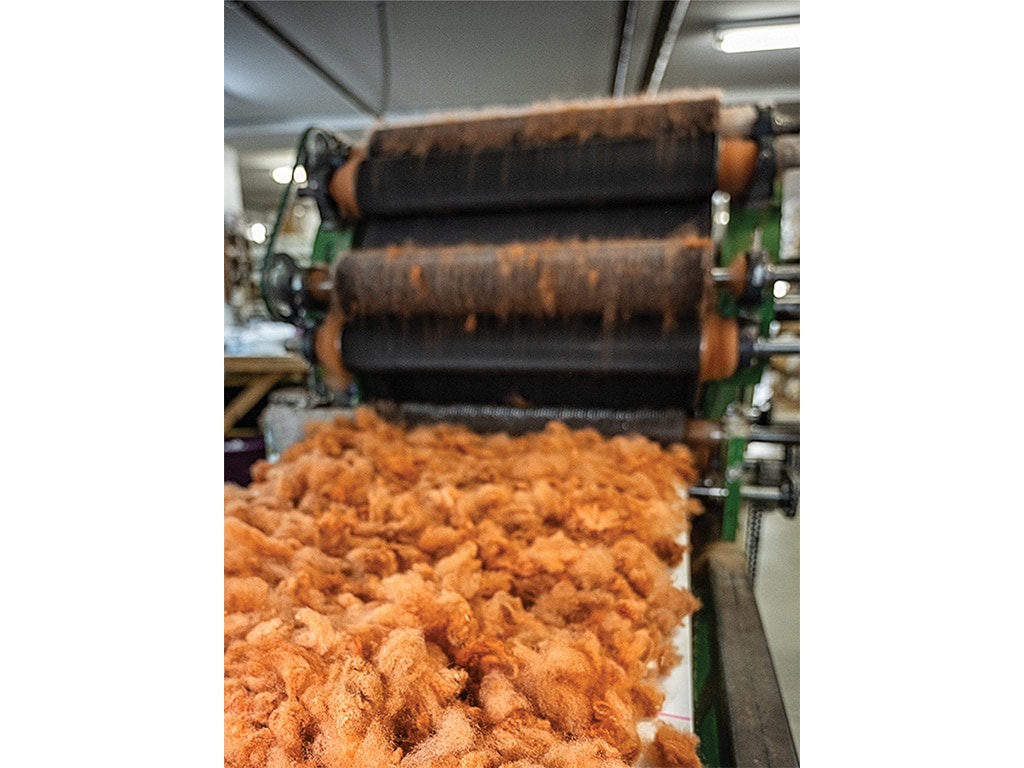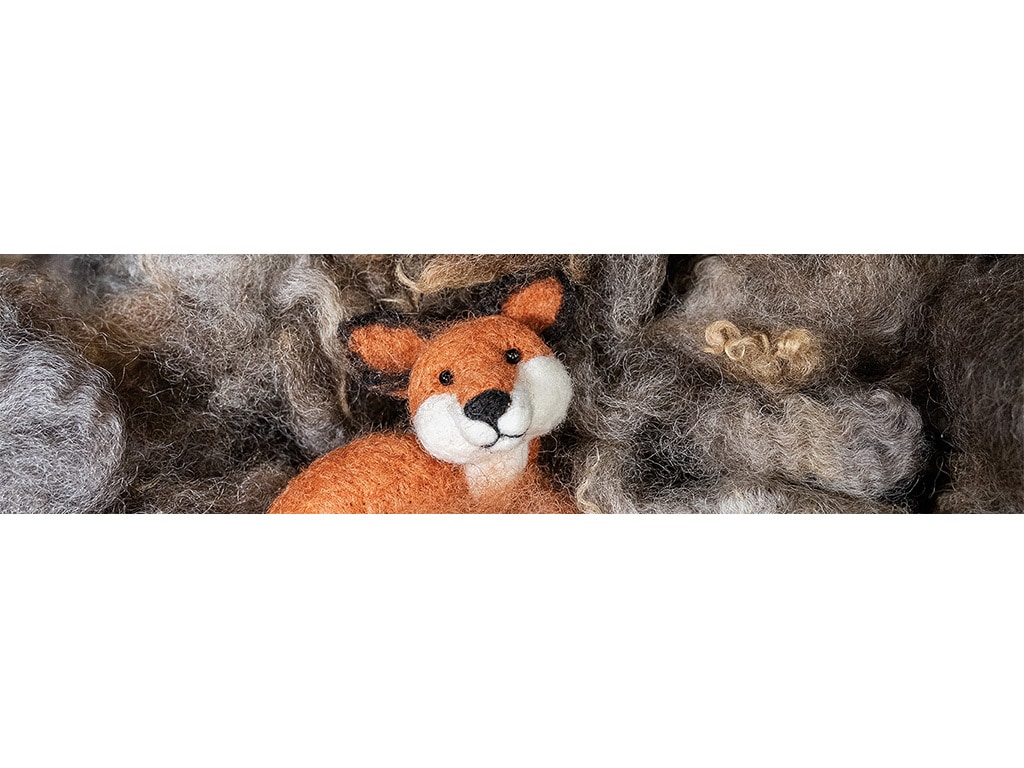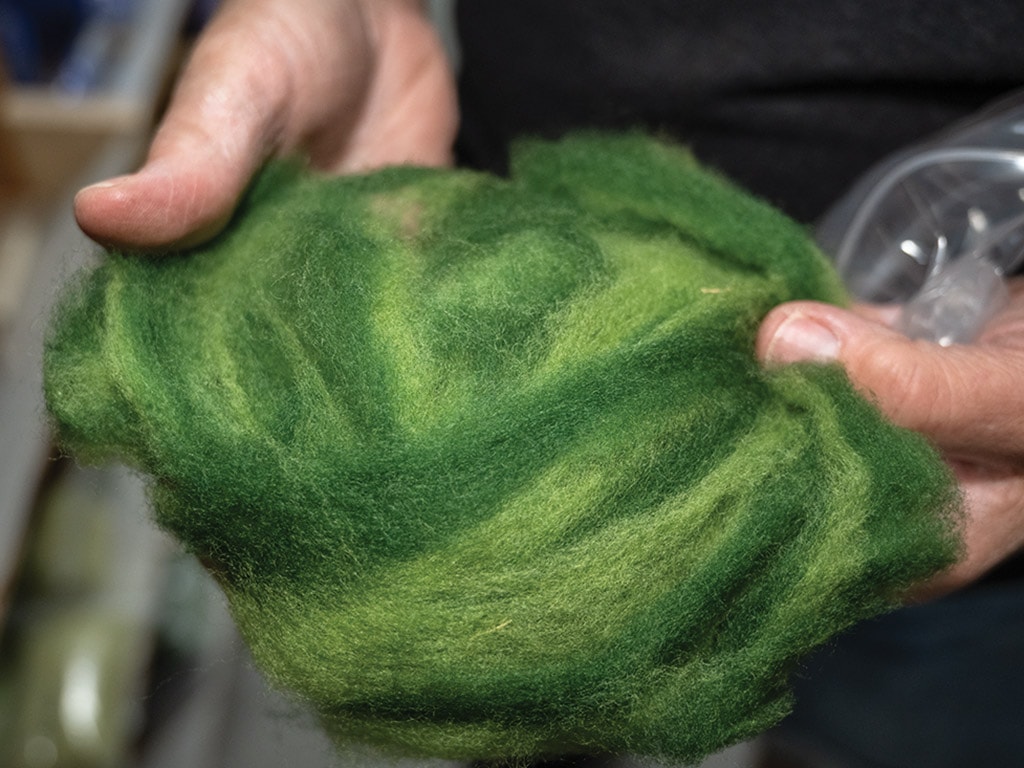Livestock/Poultry, Specialty/Niche April 01, 2025
Gathering Wool, Creating Art
Needle felting from farm to form.
by Martha Mintz
Teresa Perleberg is a bit of a magician. With a notched needle and some imagination the fiber artist transforms wool into adorable creatures both lifelike and fanciful through needle felting.
She pokes away at wool roving continually compacting and tangling the fibers. As she adds more and more material, forms begin to take shape. There are sheep, llamas, bunnies, giraffes, gemsbok, snowmen, and more, all with a cheerful countenance.
"All my animals smile. Even if they're realistic they have a little grin," Perleberg says. The North Dakota artist has always loved animals. She also always kind of thought stuffed animals lacked personality, which is why she packs so much character into each of her whimsical creations.
For most fiber artists, the creatures take about a week of work to create. Perleberg, however, has a lot more time invested.
Her process—and the business that has emerged from her hobby—is vertically integrated from pasture to sculpture. She breeds the sheep, harvests the wool, has it processed, and shares her wool and her craft with the world.
It all started when her 8-year-old daughter asked for a lamb as a birthday gift.
"My daughter and I were already working with wool, knitting and spinning," she says.
She researched breeds settling on Romney for their small size and easy temperament.
The lady she ended up buying their first sheep from was part of a spinning guild. The Wooly Women invited the Perlebergs to join their monthly gathering.
"They all grew sheep and were very helpful. They taught my daughter to needle felt and then she taught me," Perleberg says.
"I didn't know I had any artistic ability. I just started making little animals because I loved animals."
Other people loved the animals she created, too. They wanted to buy her sculptures when she displayed them at the fiber arts demonstrations she did with the Wooly Women group.
"My husband was working two jobs and I was homeschooling the kids. I needed to make an income, so it was exciting that I could maybe sell my art," she says.
Above. Perleberg has successfully bred one truly brown sheep, which is exciting as a natural brown is a difficult color to achieve with dye. Bear Creek Bunnies are a fan favorite. Perleberg makes little dresses for them and enjoys posing them for fun photos. Her multi-colored flock provides the perfect natural fibers for the creations. The Nome schoolhouse was refurbished to host fiber art retreats and house Perleberg and Armbrust's businesses. Wool from Perleberg's flock is dyed, washed, and carded into roving in the basement. The wool is assembled into 27 needle felting kits that are sold wholesale online at BearCreekFelting.com, and at the school store.
In business. Perleberg started selling her sculptures via online marketplaces that cater to small businesses. She used it as a teaching opportunity for her kids. Needle felting is an art that takes time, so her store was often sold out.
"I was being asked to teach needle felting locally, so I thought maybe I could write up instructions and put together kits to sell on Etsy instead," she says.
It took off. Making kits was far more sustainable than making and selling sculptures. She used wool from her Romney herd, which she had processed in Michigan. The herd grew. She created more kits. She made video tutorials. Orders poured in and the business began to overtake her house.
Wool was dyed on the kitchen stove and hung to dry on every surface. Her kids put needles on cards as they watched TV from a couch covered with bags of cleaned and carded roving.
In 2009, she connected with another fiber enthusiast, Chris Armbrust. Armbrust founded Dakota Fiber Mill to process yarn and roving from a variety of fiber animals. She was conveniently located between Perleberg's farm and Fargo. She started having Armbrust process her wool.
"We had a lot of the same interests," Perleberg says. Long story short, their shared interests led to a partnership. Together they revamped the 100-year-old Nome schoolhouse to house their businesses and serve as a fiber arts retreat center.
The three-story building sat vacant 50 years on the outskirts of a town of just 62 people. Now the basement is home to Bear Creek Felting and Dakota Fiber Mill. The main floor classrooms host guests from all over the country for week-long fiber arts retreats. They stay in the guest rooms on the top floor when they're not busy needle felting.
"They're all-inclusive. We pick people up at the airport. They stay at our cozy school and we take care of the all the food, drinks, and activities," Perleberg says. "We love having people come learn about fiber arts and milling."
Bear Creek Felting now offers 27 needle felting kits. They've sold thousands online and have even entered the wholesale marketplace. Perleberg has built her herd to 300 head of Romney sheep.
"Their wool is coarse and perfect for felting," she says. It creates robust felted critters that hold their shape. "You just ball up roving and keep poking until it gets tighter. Once you have the basic shape, you keep adding wool where it's needed. You can make the head separately then poke it all together. It's kind of magical. It's just solid wool through to the inside." ‡
Read More
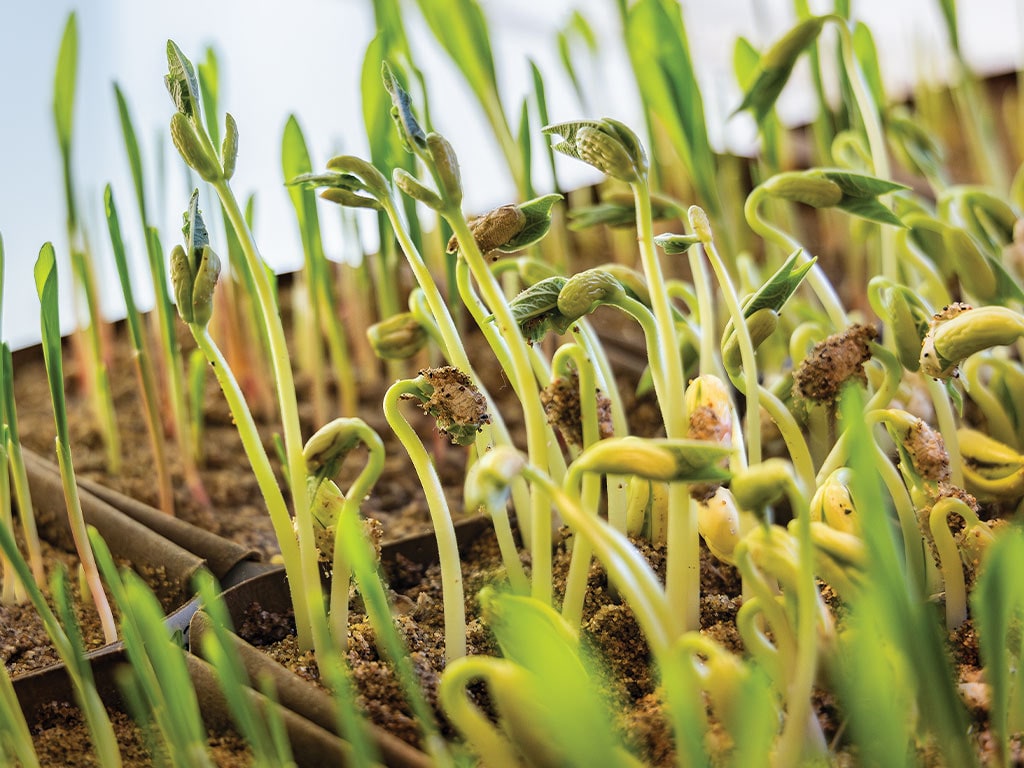
AGRICULTURE
It Starts with a Seed
Seed catalogs bring early-season joy to gardeners.


